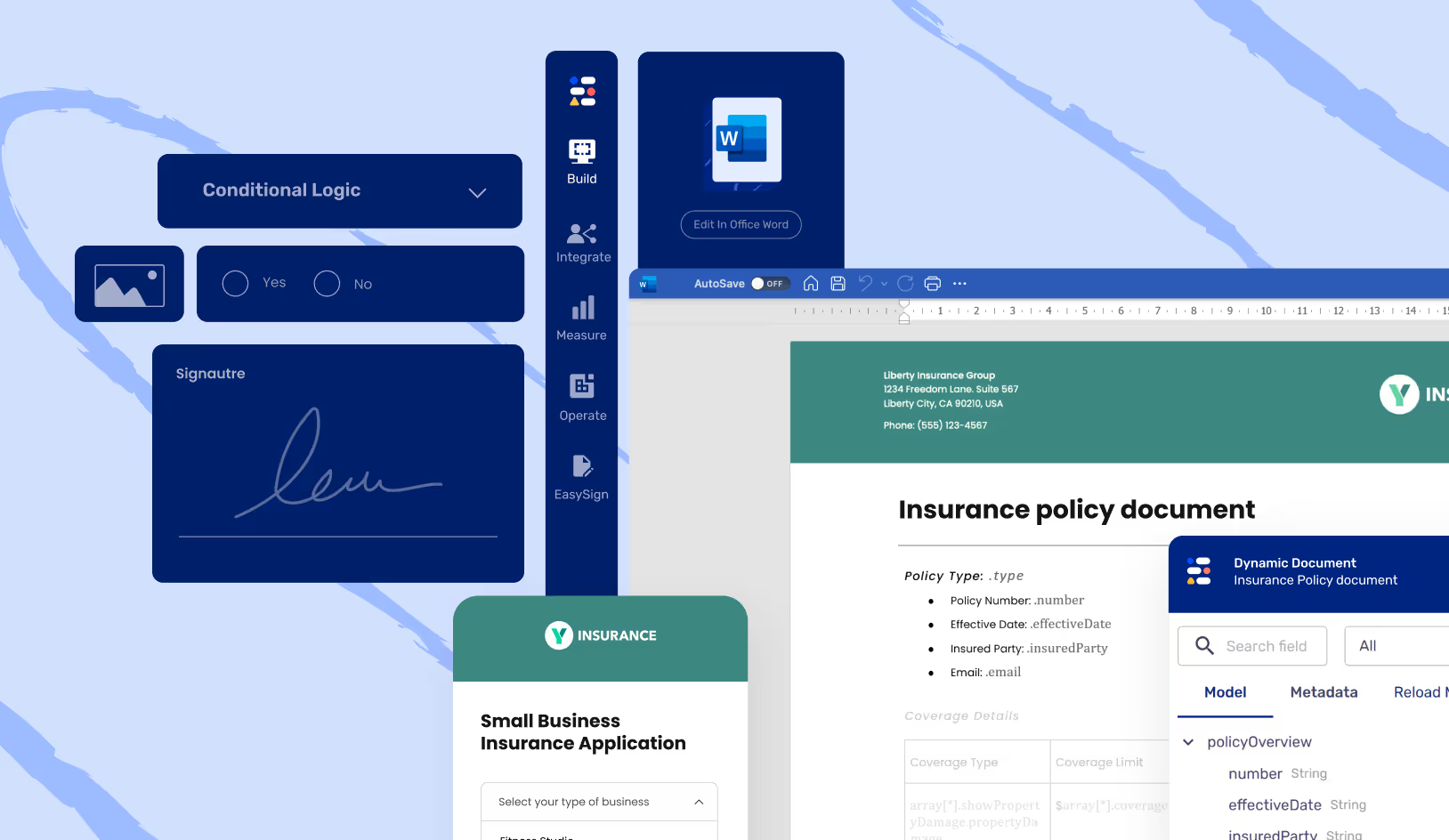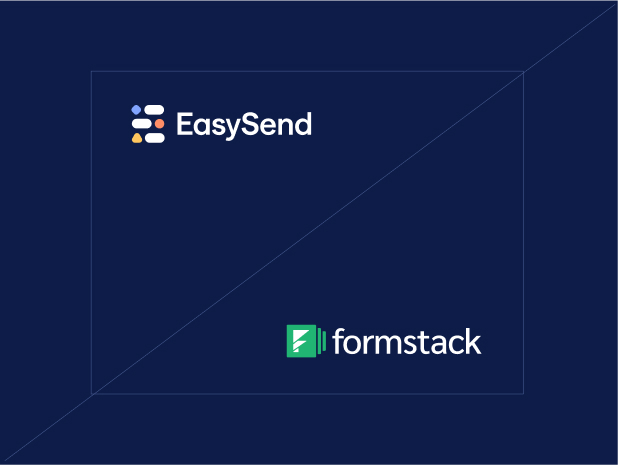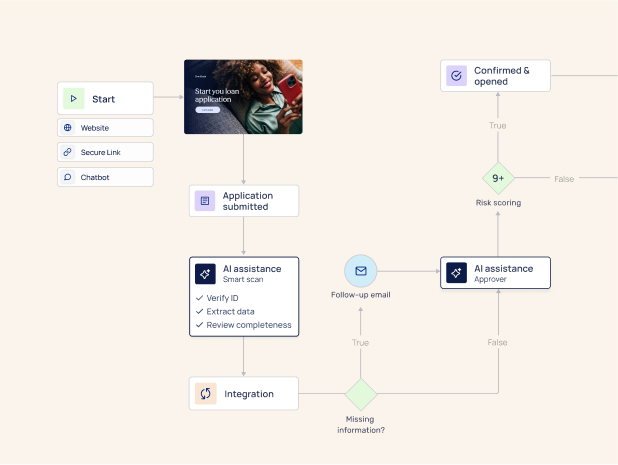Businesses across industries rely on data collection to drive decisions, compliance, and operations, yet traditional methods present significant challenges. According to Forrester’s Data Culture And Literacy Survey, poor data quality costs organizations millions annually, with over 25% estimating losses exceeding $5 million.
Challenges posed by traditional data collection are manifold. Static forms with rigid structures fail to accommodate user-specific needs. Manual data entry leads to inefficiencies, human errors, and non-compliance risks. Rates of incomplete, inconsistent, and inaccurate data are high, with McKinsey reporting that 71% of organizations struggle with incomplete data.
To overcome these challenges, businesses–especially in fields for which the collection of large amounts of complex customer data is central, such as insurance, finance, and healthcare–need smarter solutions that enhance efficiency, accuracy, and compliance. The answer lies in dynamic documents, a game-changing solution with the ability to revolutionize outdated, inefficient data collection processes.
In this blog, we’ll explore what dynamic documents are, the benefits they offer, and how they can be applied in real-world scenarios.
Understanding dynamic documents
Dynamic documents are interactive, intelligent digital forms that adjust in real time based on user inputs and stakeholder interactions. Unlike static forms, which are rigid and require users to navigate unnecessary fields that are irrelevant to their specific use case, dynamic documents utilize adaptive content and conditional logic to streamline the form completion process.
Key features of dynamic documents include:
- Adaptive content: Dynamic documents tailor content in real time based on the user's inputs, behavior, and specific needs. Instead of overwhelming users with irrelevant fields, dynamic forms intelligently adjust to show only the most pertinent questions and information.
- Seamless integration: Dynamic documents are designed to work in harmony with existing enterprise systems, including CRM, ERP, and other operational tools. By enabling direct data flow between systems, dynamic documents eliminate the need for manual data entry and ensure real-time updates across platforms.
- Real-time validation: Dynamic documents feature built-in real-time validation capabilities that instantly verify data as it’s entered, ensuring accuracy and compliance before submission. This reduces common data entry errors and enhances the overall integrity of collected information.
How dynamic documents work
To better understand how dynamic forms differ from traditional data collection processes, let’s take a look at how both work.
When an insurance company needs to intake customer data in order to underwrite a policy, they would traditionally follow these steps:
- First, the policy applicant must fill out a lengthy paper or PDF-based form that includes multiple fields, many of which may not be relevant to their specific situation.
- Once the form is submitted in person or through email, an insurance agent or administrative employee manually enters the data into internal systems.
- If any data is missing, incomplete, or incorrect, agents must follow up with the customer through phone calls or emails, delaying the underwriting process and potentially frustrating the applicant.
- The manually entered data must be cross-referenced with existing records in various internal systems like risk assessment tools and claims history databases, which may not always be synchronized with one another.
- Customers may be required to submit supporting documents such as proof of identity, income verification, or health records, which the underwriting team will have to manually review to ensure compliance and accuracy.
- Only after these steps are complete, the underwriting process will be carried out.
With dynamic documents, this process is transformed into an efficient, automated workflow that minimizes manual effort and enhances customer experience. It looks like this:
- The customer receives a dynamic document link via email, SMS, or a secure portal, pre-filled with known information from the insurer's CRM.
- As the customer fills out the form, fields dynamically adjust based on their input. Irrelevant fields are hidden, and additional questions appear only when necessary.
- Built-in real time validation rules check data accuracy as it's entered, verifying phone numbers, addresses, and financial information.
- Customers can securely upload required supporting documents, which are automatically validated for completeness and compliance.
- Submitted data is instantly integrated with core systems such as CRM, ERP, and underwriting platforms.
- Based on the data collected, dynamic documents can trigger automated workflows such as sending requests for additional information, flagging potential risks, or routing applications to underwriting specialists for further review.
- Customers receive immediate confirmation upon submission, as well as real-time updates about the status of their application.
- Dynamic documents automatically ensure compliance with regulatory requirements by logging all actions and data changes in an auditable trail.

Benefits of dynamic documents in data collection
This far more streamlined, efficient process offers a number of benefits to both customers and organizations. These include:
- Simplifying complexity: Dynamic documents break down traditionally long and complex forms into intuitive, user-friendly experiences, reducing document management complexity, making it easier to track and manage files, and facilitating better data governance by ensuring only relevant and compliant information is collected.
- Improved data accuracy: This tool minimizes human errors and discrepancies both on the customer’s data input side and the agent’s data intake side, addressing the fact that 55% of organizations report data inaccuracies as a significant issue.
- Enhanced user experience: Dynamic documents provide a personalized experience, reduce friction, and enhance engagement, increasing form completion and improving the user experience.
- Efficiency in workflows: Through automation and integration with existing systems and workflows, dynamic forms reduce the time and resources spent on manual data entry and processing.
- Security and compliance: Dynamic documents use data encryption, access controls, and audit trails to protect sensitive information and ensure compliance with data protection regulations such as GDPR and HIPAA.
Real-world applications of dynamic documents
In fields like insurance, financial services, and healthcare, organizations rely on the intake of massive amounts of sensitive customer data for core workflows, such that data collection is a critical process–and inaccuracies, errors, and incomplete data can lead to serious consequences. Let’s take a look at how each of these industries can utilize dynamic documents in everyday processes.
- Insurance industry: Insurers can use dynamic forms to streamline policy applications, claims processing, and regulatory documentation, reducing effort on the part of the customer and improving the policyholder experience while ensuring accuracy and compliance.
- Financial services: Financial services companies can enhance loan applications, onboarding, and compliance documentation with dynamic forms, speeding up approvals while maintaining accuracy and regulatory adherence.
- Healthcare: Dynamic forms enable healthcare organizations such as hospitals, clinics, and telehealth providers to simplify patient intake processes and medical questionnaires, ensuring compliance with health regulations such as HIPAA and providing personalized patient experiences.
{{
The Future of Data Collection with Dynamic Documents
As organizations increasingly adopt AI-powered dynamic documents for predictive analytics and integrate machine learning models for better insights and automation, this game-changing solution will only become more commonplace and essential to daily processes. Transitioning from static, error-prone forms to dynamic, adaptive solutions will be seen as a necessity for improving accuracy, efficiency, and compliance–and one that isn’t particularly difficult to implement.
EasySend Dynamic Document allows you to easily manage documents with a single, adaptable template inside Microsoft Word, enhancing efficiency and streamlining your content management process. With built-in features like multi-format support, error-free transmission, and white labeling, it can transform how you create and work with contracts, applications, claim submissions, settlement agreements, and more. For enterprises looking to modernize data collection processes to stay competitive, EasySend offers unparalleled agility, security, and compliance.
Schedule a demo to discover how EasySend’s dynamic document solutions can help your organization achieve efficiency and compliance in data collection.





